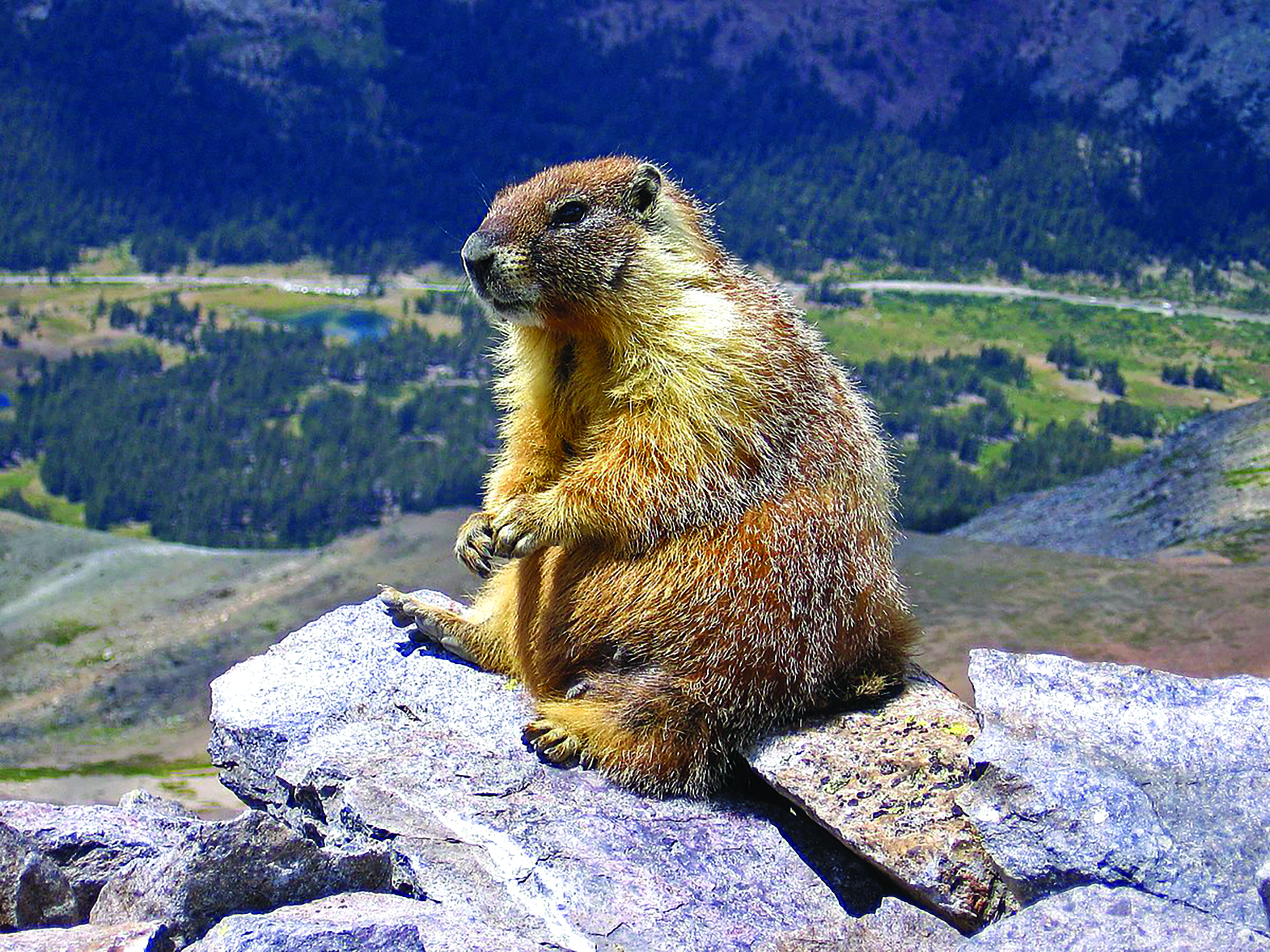Groundhogs! a.k.a. Whistle Pigs, Woodchucks
Almost anywhere you go in the world you will find rodents. This mammal has two teeth right in the front of their mouth that never stop growing. The teeth are called incisors. Rodents can be as small as a pygmy mouse which is around an inch long, or as large as a capybara that can be four feet long and weigh up to 175 pounds. Falling on the scale between the capybara and the pygmy mouse is a rodent called the groundhog. The groundhog is closely related to squirrels and chipmunks, but looks a lot like a guinea pig.
The groundhog is a North American rodent that lives mostly in the eastern United States, up into Canada and over into Alaska. Depending on who you are talking to and where they live you might be talking about a groundhog and not even know it because they have lots of different names. The Algonquin tribal name for this animal is Wuchak. European settlers translated that name into woodchuck. In the Appalachian region of the United States the groundhog is known as the whistle pig. This name comes from the whistled warning that is given to tell others that danger is approaching and to also look for a girlfriend in the spring.
Groundhogs are very athletic. They are amazing diggers and create huge maze-like burrows. A groundhog burrow can be almost 170 feet long and have many different rooms, even a bathroom. They have even been credited for discovering a Native American Village that is an archaeology site in Ohio. Like other squirrels they can climb trees and are very good swimmers. They are also olympic quality eaters. An adult groundhog can eat a pound of food at a time. This is important because groundhogs are one of the true hibernating animals. That means they slow their metabolism down and conserve energy during the extreme months of winter. A groundhog needs to pack on the fat for this because hibernation can last up to 150 days.
Groundhog day is a holiday celebrated in the United States and Canada, but its history began in Europe hundreds of years ago. Halfway through the winter months, with many dark days and cold nights left, European Christians would take their candles to church. The priest would bless the candles hoping to give good luck to the people to make it through the rest of winter. This celebration was called Candlemas. Legend said if it was sunny on Candlemas, the winter would last another six weeks. German people began using a hedgehog during Candlemas to predict when winter would end. It was a great way to get together with family and friends they had not seen because the winter season and its weather. Candlemas became like a party to celebrate that winter was halfway over.
When European settlers came to North America, they brought the tradition with them but since no hedgehogs here, they decided the animal most like a hedgehog in North America was the groundhog. The first time Groundhog’s Day was in a newspaper, it was in Pennsylvania in a little town named Punxsutawney. A groundhog named Punxsutawney Phil was used to predict the weather. This annual celebration is now covered by the national news and thousands of people go to see if Punxsutawney Phil will see his shadow.




